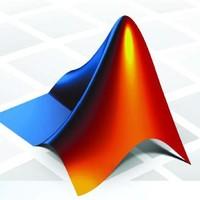We present experimental and theoretical results on a method that applies a numerical solver iteratively to solve several non-negative quadratic programming problems in geometric optimization. The method gains efficiency by exploiting the potential sparsity of the intermediate solutions. We implemented the method to call quadprog of MATLAB iteratively. In comparison with a single call of quadprog, we obtain a 10-fold speedup on two proximity graph problems in $\mathbb{R}^d$ on some public data sets, a 10-fold speedup on the minimum enclosing ball problem on random points in a unit cube in $\mathbb{R}^d$, and a 5-fold speedup on the polytope distance problem on random points from a cube in $\mathbb{R}^d$ when the input size is significantly larger than the dimension; we also obtain a 2-fold or more speedup on deblurring some gray-scale space and thermal images via non-negative least square. We compare with two minimum enclosing ball software by G\"{a}rtner and Fischer et al.; for 1000 nearly cospherical points or random points in a unit cube, the iterative method overtakes the software by G\"{a}rtner at 20 dimensions and the software by Fischer et al. at 170 dimensions. In the image deblurring experiments, the iterative method compares favorably with other software that can solve non-negative least square, including FISTA with backtracking, SBB, FNNLS, and lsqnonneg of MATLAB. We analyze theoretically the number of iterations taken by the iterative scheme to reduce the gap between the current solution value and the optimum by a factor $e$. Under certain assumptions, we prove a bound proportional to the square root of the number of variables.
翻译:我们用数字求解器反复展示了实验和理论结果, 以解决几何优化的数位优化中若干非负式二次编程问题。 这种方法通过利用中间解决方案的潜在宽度提高了效率。 当输入大小大大大于维度时, 我们采用了调用 MATLAB 的 4prog 迭接方法。 与一个调用 4prog 的单一调用相比, 我们在一些公共数据集上, 在两个近距离图问题上获得了10倍的加速, 在一个单位立方的随机点上最小的包含球问题的10倍增速 。 这种方法通过 $mathbb{RQd$+RQd$, 和多点的多点调用多点调调调用 立方方的 立方平方维值 。 我们通过两个最小的自定义的 ABSLS+R+R+R+R&FFER 的软体软体软体软体, 包括一个离层的软体、 一个近1000 的自平面的软体、 平面的软体的平面的平面的平面的平面的平面的摩点, 、 以平面的平面的平面的平面的平面的平面的平面的平面的平面的平面的平面的平面的平面法。


